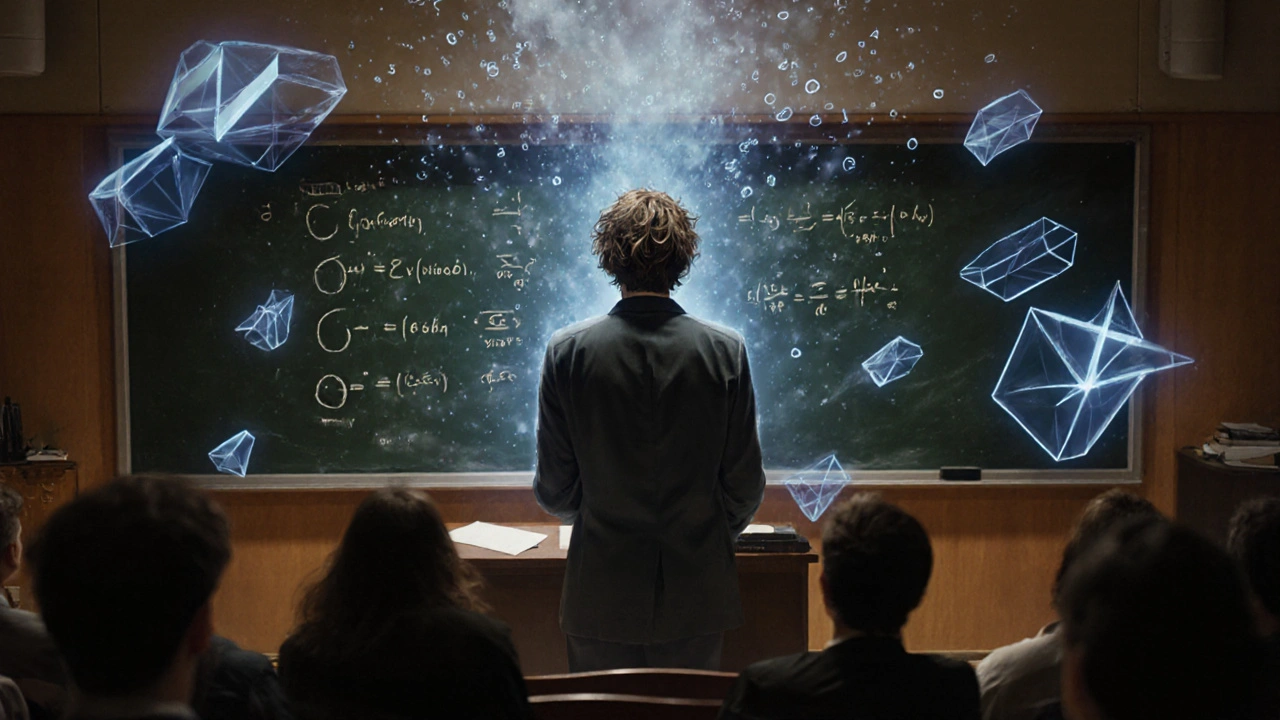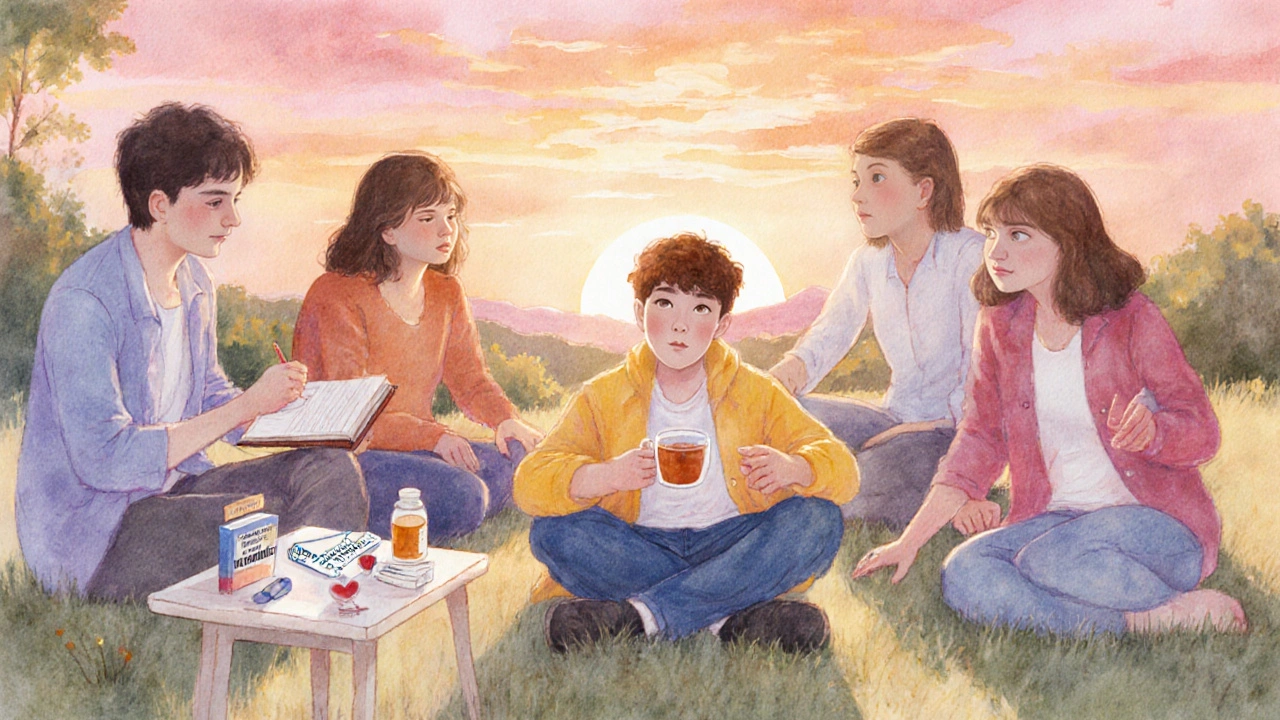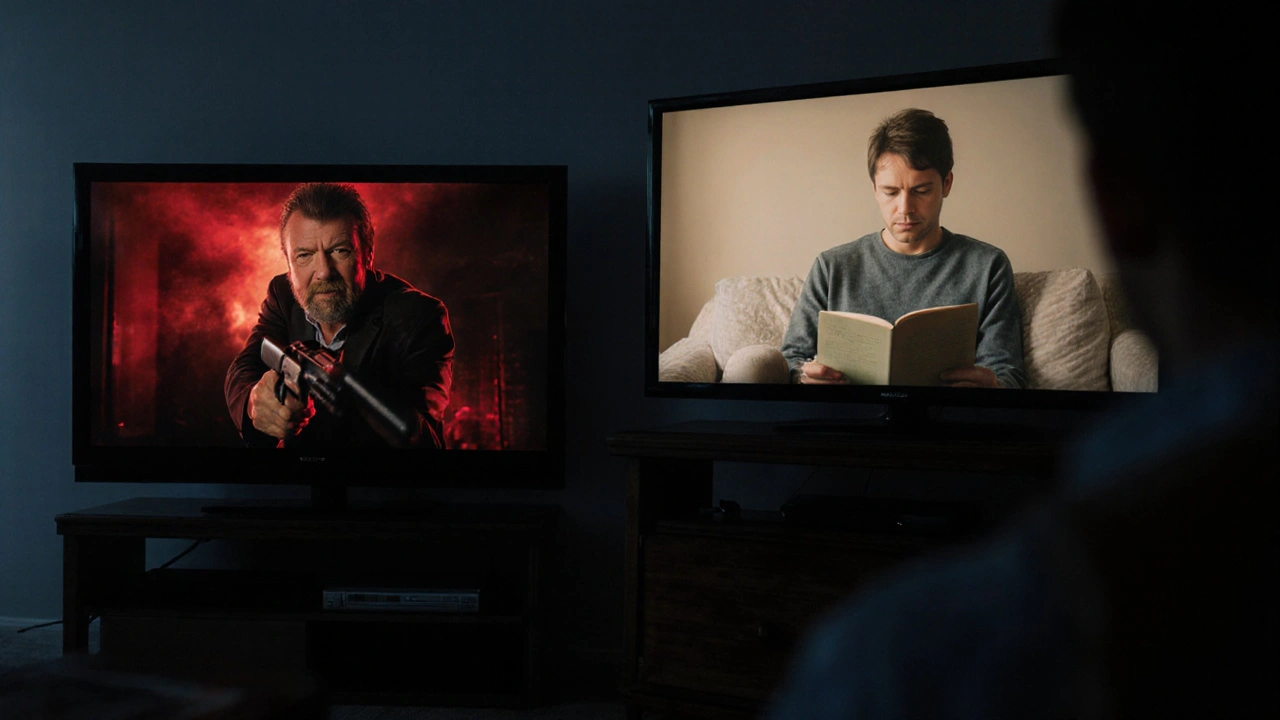Schizophrenia in Pop Culture: Truth vs Myth Checker
A Beautiful Mind (2001)
Shows delusions, medication, family support; some drama added
AccurateSplit (2016)
Equates schizophrenia with split personality; violent climax
HarmfulHomeland – Season 2 (2012)
Distinguishes bipolar from schizophrenia; shows treatment
AccurateShutter Island (2010)
Uses psychosis as a twist; portrays patient as dangerous
HarmfulWhen movies or TV shows mention schizophrenia is a chronic brain disorder characterized by distortions in thinking, perception, emotions, language, and behavior, most viewers form opinions based on that snippet. schizophrenia in pop culture often swings between gritty realism and sensational myth.
What Is Schizophrenia?
The first step is to understand the condition beyond the headlines. According to the DSM-5 (the Diagnostic and Statistical Manual of Mental Disorders, Fifth Edition), schizophrenia is diagnosed when a person experiences two or more of the following for at least a month: delusions, hallucinations, disorganized speech, grossly disorganized or catatonic behavior, and negative symptoms such as flat affect.
It is a mental illness (any condition that affects a person’s thinking, feeling, behavior, or mood) that affects roughly 20 million people worldwide, according to the World Health Organization (the United Nations agency responsible for public health). The disorder is not a single disease; it is a spectrum of symptoms that varies in severity and treatment response.
How Pop Culture Shapes Perception
Film, television, music, and even video games act as powerful cultural mirrors. When a character is labeled “schizophrenic,” the audience often assumes the worst-danger, unpredictability, and violent outbursts. This media representation (the way mental health topics are depicted in various media forms) can cement stereotypes and affect real‑world attitudes.
Because many people never meet someone with schizophrenia, they rely on these depictions to form their understanding. That makes the difference between an accurate portrayal and a harmful stereotype matter more than any academic text.
Common Harmful Stereotypes
Below are the tropes that appear far too often:
- Harmful stereotype (an oversimplified and damaging image of a group): The “dangerous lunatic” who attacks strangers.
- “Split personality” confusion: equating schizophrenia with dissociative identity disorder.
- Magical powers: portraying hallucinations as prophetic visions.
- Incessant drug use: linking the disorder automatically to substance abuse.
These clichés ignore the fact that most people with schizophrenia are not violent. Studies from the WHO show that they are more likely to be victims than perpetrators.

Examples of Accurate Portrayals
When creators invest time in research, the result can be a nuanced, human story. Notable works include:
- A Beautiful Mind - While dramatized, the film consulted with Dr. Elyn Saks, a professor with lived experience, and showed the protagonist’s struggle with delusions and his reliance on antipsychotic medication (drugs that help control psychotic symptoms).
- Homeland (Season 2) - The lead character’s bipolar disorder is clearly distinguished from schizophrenia, preventing the “mad genius” confusion.
- Silver Linings Playbook - Though focused on bipolar disorder, it models supportive families and therapeutic interventions without sensationalizing the illness.
These titles avoid the classic “dangerous” trope and instead highlight coping strategies, therapy, and the importance of community support.
Impact on Stigma and Real‑World Consequences
The stigma (the social disapproval attached to a characteristic) generated by harmful portrayals can deter people from seeking help. A 2023 survey in the UK found that 41% of respondents would avoid a mental‑health professional if they feared being labeled “crazy” by friends who watched dramatized TV shows.
Conversely, accurate representations can reduce fear. After the release of “A Beautiful Mind,” the National Alliance on Mental Illness reported a 12% increase in inquiries about schizophrenia resources.
Guidelines for Responsible Storytelling
If you’re a writer, director, or game designer, consider these practical tips:
- Consult experts: reach out to psychiatrists, psychologists, or advocacy groups early in the script development.
- Use real language: avoid “crazy” or “psycho” as descriptors; instead, use the clinical terms from the DSM-5.
- Show the whole person: depict relationships, hobbies, and achievements-not just symptoms.
- Balance symptoms with treatment: illustrate medication, therapy, and social support as part of the narrative.
- Avoid sensationalism: keep hallucinations and delusions grounded in the character’s experience rather than using them for jump‑scares.
Following these steps helps break the cycle of misinformation and promotes empathy.

Comparison: Accurate vs Harmful Portrayals
| Media Example | Portrayal Type | Key Strengths / Weaknesses | Impact on Public Perception |
|---|---|---|---|
| A Beautiful Mind (2001) | Accurate | Shows delusions, medication, family support; some drama added | Increases empathy; sparks interest in real‑life stories |
| Split (2016) | Harmful | Equates schizophrenia with split personality; violent climax | Reinforces fear and misunderstanding |
| Homeland - Season 2 (2012) | Accurate | Distinguishes bipolar from schizophrenia; shows treatment | Educates viewers on diagnostic differences |
| Shutter Island (2010) | Harmful | Uses psychosis as a twist; portrays patient as dangerous | Adds to “schizophrenia = crazy” myth |
Next Steps for Readers
If you’ve watched a show that left you uneasy, take a moment to research the disorder. Trusted sources include the WHO, the National Institute of Mental Health, and local mental‑health charities. Consider joining a discussion group or attending a public lecture-real stories often debunk the myths perpetuated on screen.
For creators, start a dialogue with mental‑health consultants before you lock the script. A short consultation can prevent months of rewrites later and make your work stand out for its authenticity.
Frequently Asked Questions
Does schizophrenia make people violent?
No. Research from the WHO shows that individuals with schizophrenia are more likely to be victims of violence than perpetrators. Most are non‑violent, especially when receiving proper treatment.
What’s the difference between schizophrenia and dissociative identity disorder?
Schizophrenia involves psychosis-delusions, hallucinations, and disorganized thinking. Dissociative identity disorder (formerly “multiple personality”) is characterized by distinct identity states. They are unrelated conditions.
Which movies get schizophrenia right?
"A Beautiful Mind" (2001) and the second season of "Homeland" (2012) are often cited for their balanced depictions, showing both symptoms and supportive treatment.
How can I support a friend with schizophrenia?
Listen without judgment, encourage professional help, and learn about medication side‑effects. Small gestures-regular check‑ins, offering rides to appointments-make a big difference.
Why does inaccurate media matter?
Inaccurate portrayals deepen stigma, discourage treatment‑seeking, and can even influence policy decisions that allocate resources away from mental‑health services.

Ellie Hartman
October 8, 2025 AT 15:52Thanks for putting this together, really helpful.
Alyssa Griffiths
October 9, 2025 AT 08:06It’s astonishing, really, how often mainstream cinema slaps a simplistic label on schizophrenia, ignoring the nuanced symptomatology that the DSM‑5 painstakingly delineates; the result is a cascade of misinformation, which, in turn, fuels public stigma, and perpetuates the dangerous myth that every person with the diagnosis is inherently violent, a notion that academic literature repeatedly debunks.
Jason Divinity
October 10, 2025 AT 02:10The depiction of schizophrenia in media bears a profound responsibility that is too often overlooked by storytellers. When a film chooses to prioritize shock over accuracy, it not only miseducates but also entrenches harmful stereotypes. Research indicates that exposure to sensationalized portrayals can increase social distance and discourage help‑seeking behavior among those who identify with the symptoms. Conversely, nuanced narratives that incorporate treatment, familial support, and the everyday struggles of individuals can foster empathy and normalize the condition. A balanced representation acknowledges both the debilitating aspects of psychosis and the resilience of those who navigate it. For instance, “A Beautiful Mind” dramatizes John Nash’s delusions yet also highlights his collaborative relationship with his wife and his eventual academic contributions. This duality allows audiences to witness the humanity behind the diagnosis rather than a one‑dimensional caricature. Moreover, accurate portrayals can serve as informal educational tools, prompting viewers to seek reputable sources such as the WHO or NAMI for deeper understanding. The ripple effect of such informed curiosity can translate into increased funding for mental‑health services and reduced policy bias. It is important to note that the majority of individuals with schizophrenia are non‑violent, a fact supported by multiple epidemiological studies. The media’s preoccupation with “dangerous lunatics” skews public perception and obscures the systemic barriers these individuals face. By collaborating with psychiatric consultants, creators can avoid the pitfalls of mythologizing mental illness. Script developers should also be mindful of language, opting for clinical terminology instead of colloquial slurs that reinforce stigma. In the digital age, audience feedback loops are swift; a single misstep can ignite backlash, while thoughtful representation can earn commendations and lasting cultural impact. Ultimately, the ethical obligation of artists is to balance artistic license with social responsibility, ensuring that the stories they tell illuminate rather than vilify mental health realities.
andrew parsons
October 10, 2025 AT 20:13While your exposition is admirably comprehensive, it would benefit from tighter syntactic coordination; for example, consider merging sentences three and four to enhance flow, and avoid repetitive use of “the” - a concise alternative may improve readability 😊.
Sarah Arnold
October 11, 2025 AT 14:16Great overview! 🌟 If you’re looking for more examples, the series “This Is Us” handled a supporting character’s psychosis with subtlety, showing therapy sessions and medication adherence without sensationalism.
Rajat Sangroy
October 12, 2025 AT 08:20Exactly! Showcasing realistic therapy moments can actually boost viewership, because audiences crave authenticity - let's push for more of that, no more lazy horror tropes! 💥
dany prayogo
October 13, 2025 AT 02:23Oh, brilliant, another checklist that pretends to solve the centuries‑old problem of media ignorance with a few dropdown menus, as if Hollywood executives will pause their Netflix binge to read a tooltip - adorable, really. The truth is, most productions are driven by profit, not pedagogy, so a pop‑up box hardly shifts the narrative tide. Yet, perhaps if a blockbuster consulted a psychiatrist before filming the climax, we’d see fewer “schizo‑villains” wielding knives for dramatic effect. In any case, kudos for the effort; a modest step is still a step, even if it feels like moving a mountain with a spoon. 🙃
Wilda Prima Putri
October 13, 2025 AT 20:26Sure, a spoon works if you’re really into absurd workouts.
Edd Dan
October 14, 2025 AT 14:30i think its cool that people finally talk bout mental health in movies, its helps break the stigma.
Cierra Nakakura
October 15, 2025 AT 08:33Totally agree! 🎉 It’s awesome when pop culture gets it right, and even better when we can call out the stuff that misses the mark. 🗣️
Sharif Ahmed
October 16, 2025 AT 02:36One must concede that the cinematic portrayal of psychiatric disorders teeters upon the precipice between artistic expression and didactic cautionary tale, a dichotomy that, when mishandled, precipitates cultural myopia.
Charlie Crabtree
October 16, 2025 AT 20:40Spot on! 🎬 Let’s keep demanding depth, not just shock value - the audience deserves smarter storytelling. 🙌
RaeLyn Boothe
October 17, 2025 AT 14:43The tool is handy, though I wish it included indie films too.
Fatima Sami
October 18, 2025 AT 08:46While the interface is user‑friendly, incorporating lesser‑known titles could enhance its comprehensiveness, thereby benefiting a broader audience.
Arjun Santhosh
October 19, 2025 AT 02:50yeah, adding some indie stuff would be cool, maybe we can all suggest titles and make it a community project.
Stephanie Jones
October 19, 2025 AT 20:53In the grand tapestry of perception, each misrepresentation is a thread that pulls at the fabric of our collective understanding, urging us to question not only what we watch, but why we choose to believe.